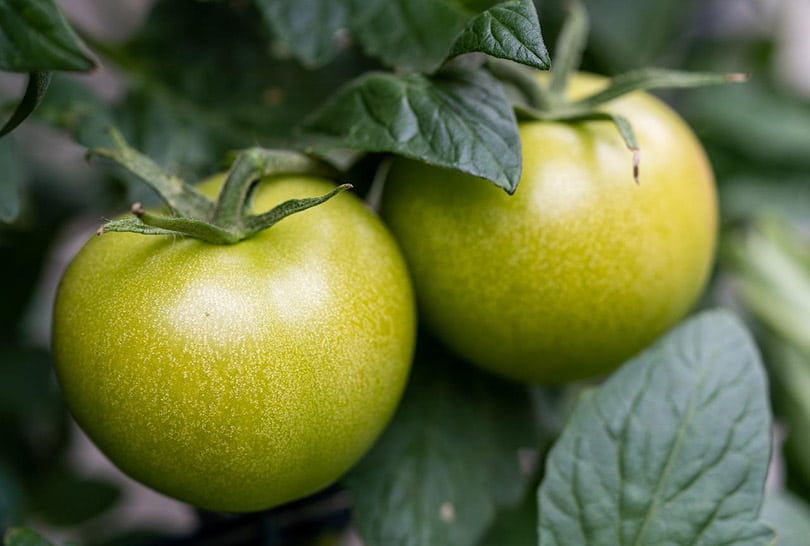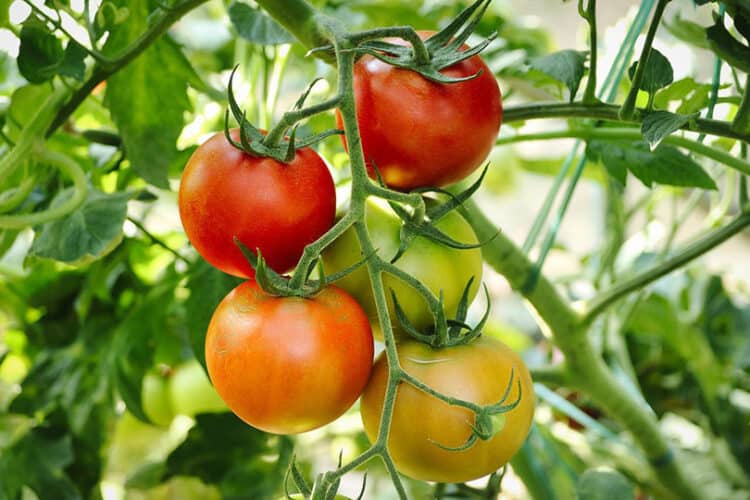Great for sauces, salads, and sandwiches, the tomato is a versatile fruit packed with vitamins and minerals. Considering how many dishes tomatoes can be used in and how often hungry cats beg for food, your feline best friend is likely to take a nibble of a tomato at some point.
Tomatoes are both toxic and non-toxic, depending on the part of the fruit or plant that your cat eats. The ripe, red fruit that you put in your salad is non-toxic and safe for your cat. However, the leaves and stem of the tomato plant, along with unripe green tomatoes, are toxic to your cat and should be avoided.
Why Is the Tomato Plant Toxic?

As part of the nightshade family, tomatoes are considered toxic simply because they’re related to several other toxic plants like belladonna. Most members of the nightshade family, including potatoes and eggplant, contain solanine in the leaves, a naturally occurring substance that protects the plant.
While tomatoes do have solanine, they mostly contain a milder form of toxin known as tomatine. Like solanine, tomatine is toxic to cats, dogs, and horses. Ripe tomatoes only contain a tiny amount of tomatine, but green tomatoes, the stem, and the leaves all have a much higher concentration of the toxin.
Although it’s not recommended to let your cat eat the plant, most cats will be fine if they only nibble on a leaf. The biggest issues are caused when your cat ingests a large amount of tomatine in one sitting.
What Are the Symptoms of Tomato Plant Toxicity?
Recognizing the signs of poisoning can be a lifesaver for your cat. If they ingest a large amount of the tomato plant or unripe tomatoes, they can suffer from a range of symptoms, from minor stomach upset due to consuming a new food to severe stomachaches.
Symptoms of tomato plant toxicity are:
- Depression
- Dilated pupils
- Gastrointestinal upset
- Hypersalivation
- Loss of appetite
- Slow heart rate
What to Do If Your Cat Eats Tomatoes

Cats might not be known to eat everything that they see the same way that dogs do, but they can and will take a bite of things that they’re not supposed to. House plants and the plants in your vegetable garden are a few examples.
If your cat has access to tomatoes or plants, it’s a good idea to familiarize yourself with the symptoms of poisoning.
In the case of ripe tomatoes, there’s not much risk to your cat. The ripe fruit contains a much lower concentration of toxins than the plant itself does. A piece of ripe fruit won’t hurt them, though your cat might not like to eat tomatoes at all. They may only ingest a tiny amount of the plant itself. In this case, keep a close eye on them for the next 24 hours to ensure that they don’t develop any serious symptoms. Most minor gastrointestinal upsets, like vomiting or diarrhea, usually pass on their own.
If your cat ingested a large amount of the tomato plant, however, and is showing signs of more serious symptoms or is still sick after 24 hours, contact your veterinarian.
You can also restrict your cat’s access to tomato plants by using deterrents or keeping the plants in a secure greenhouse if you have one. If you buy your tomatoes, make sure you throw the vine and leaves away when you’re finished with them.
Wrapping Up
If you catch your cat eating a ripe tomato that they stole from your salad, there’s nothing to worry about. Ripe tomatoes are non-toxic to pets because they don’t contain as many toxins as the rest of the plant. If your cat ingests green tomatoes or the leaves or stem of the tomato plant, you should watch to see if they develop any symptoms of toxicity.
If they show signs of hypersalivation, slowed heart rate, or severe gastrointestinal distress, contact your veterinarian for advice.
Featured Image Credit: Pixabay
















